A Guide to Clamping for Better Woodworking Results
Clamping is one of those underrated heroes in the world of woodworking. It's like the unsung glue that holds everything together—literally! When you're knee-deep in sawdust, measuring and cutting your materials, you might not realize just how crucial proper clamping is until you see your project fall apart because of a poorly aligned joint or uneven pressure. In this guide, we're diving deep into the essential techniques and tools that will elevate your woodworking game. Whether you're a seasoned pro or a weekend warrior, mastering the art of clamping can significantly enhance the precision and quality of your projects.
Imagine trying to assemble a jigsaw puzzle without the pieces fitting together snugly. Frustrating, right? That's exactly what happens when you neglect the importance of clamping. From ensuring that your joints are tight to holding pieces in place while the glue dries, the right clamp can make all the difference. In this article, we'll explore not only the different types of clamps available but also the best practices for using them effectively. So, grab your favorite beverage, settle in, and let's get started on this journey to better woodworking results!
Before we dive into the nitty-gritty of different clamp types, it’s essential to grasp some fundamental principles of clamping. Think of clamping as the backbone of your woodworking projects. It involves not just holding pieces together but also ensuring that pressure is distributed evenly across the joint. This is crucial for preventing warping or splitting, which can ruin your hard work. Proper alignment is equally important. If your pieces are misaligned, no amount of clamping will save the day. So, how do you achieve that perfect alignment and pressure distribution? The answer lies in understanding the basics of clamping techniques.
One key aspect to consider is the amount of pressure applied. Too little pressure can lead to loose joints, while too much can damage your wood. It's a delicate balance and often requires a bit of practice. Additionally, using protective pads on your clamps can help distribute pressure evenly and prevent damage to your workpieces. Always remember, a good woodworker is not just about the tools they use but also about how well they understand and apply the principles behind those tools.
Now that we've laid the groundwork, let's explore the various types of clamps available for woodworking. Each type serves a unique purpose and can significantly impact your woodworking process. Here’s a quick overview:
- Bar Clamps: Great for large projects and providing strong, even pressure.
- Pipe Clamps: Cost-effective and customizable for various lengths.
- Corner Clamps: Perfect for ensuring right angles in your joints.
First up, we have bar clamps. These versatile tools are ideal for larger projects where you need to apply consistent pressure across a wide area. Imagine trying to hold two pieces of wood together with your hands while gluing them—it's a recipe for disaster! Bar clamps come to the rescue by providing strong, even pressure that keeps everything in place. Plus, they are easy to adjust, making them a favorite among woodworkers for various applications.
Bar clamps offer several advantages that make them indispensable in any woodworker's toolkit:
- Quick adjustments for different project sizes.
- High clamping force, ensuring tight joints.
- Versatility for both small and large-scale woodworking tasks.
However, it's not all sunshine and rainbows. Bar clamps can be bulky and may not fit into tight spaces, which can limit their usability in certain woodworking scenarios. If you're working on a compact project, you might find yourself wishing for a more nimble solution.
Next, let's talk about pipe clamps. These are a cost-effective solution for larger projects, and they allow you to customize the lengths for clamping. Imagine being able to create a clamp that fits your project perfectly—no more struggling with oversized or undersized clamps! Pipe clamps are easy to assemble and disassemble, making them a practical choice for many woodworkers.
Now that you know about the various types of clamps, it's time to discuss how to choose the right one for your specific woodworking project. This step is crucial, as the material, size, and type of joint will determine the best clamp to use. Think of it like choosing the right tool for a job—using a hammer to screw in a bolt will likely lead to frustration!
When selecting clamps, consider the following factors:
- Project scale: Are you working on a small craft or a large furniture piece?
- Type of joint: Are you creating a butt joint, miter joint, or something else?
- Materials involved: Different woods may require different clamping techniques.
As with any skill, there are common mistakes to avoid when it comes to clamping. Over-tightening is a biggie—while you want a secure joint, too much pressure can lead to damage and misalignment. Improper positioning is another pitfall; if your clamps aren’t placed correctly, you might end up with gaps or uneven surfaces. Always take a moment to double-check your setup before applying pressure.
Q: What is the best type of clamp for beginners?
A: Bar clamps are often recommended for beginners due to their versatility and ease of use.
Q: How do I know if I'm applying the right amount of pressure?
A: A good rule of thumb is to apply just enough pressure to hold the pieces together without crushing them. Test the joint after clamping to ensure it's secure.
Q: Can I use clamps for materials other than wood?
A: Yes! While clamps are most commonly used for woodworking, they can also be used for other materials like metal or plastic, depending on the clamp type.
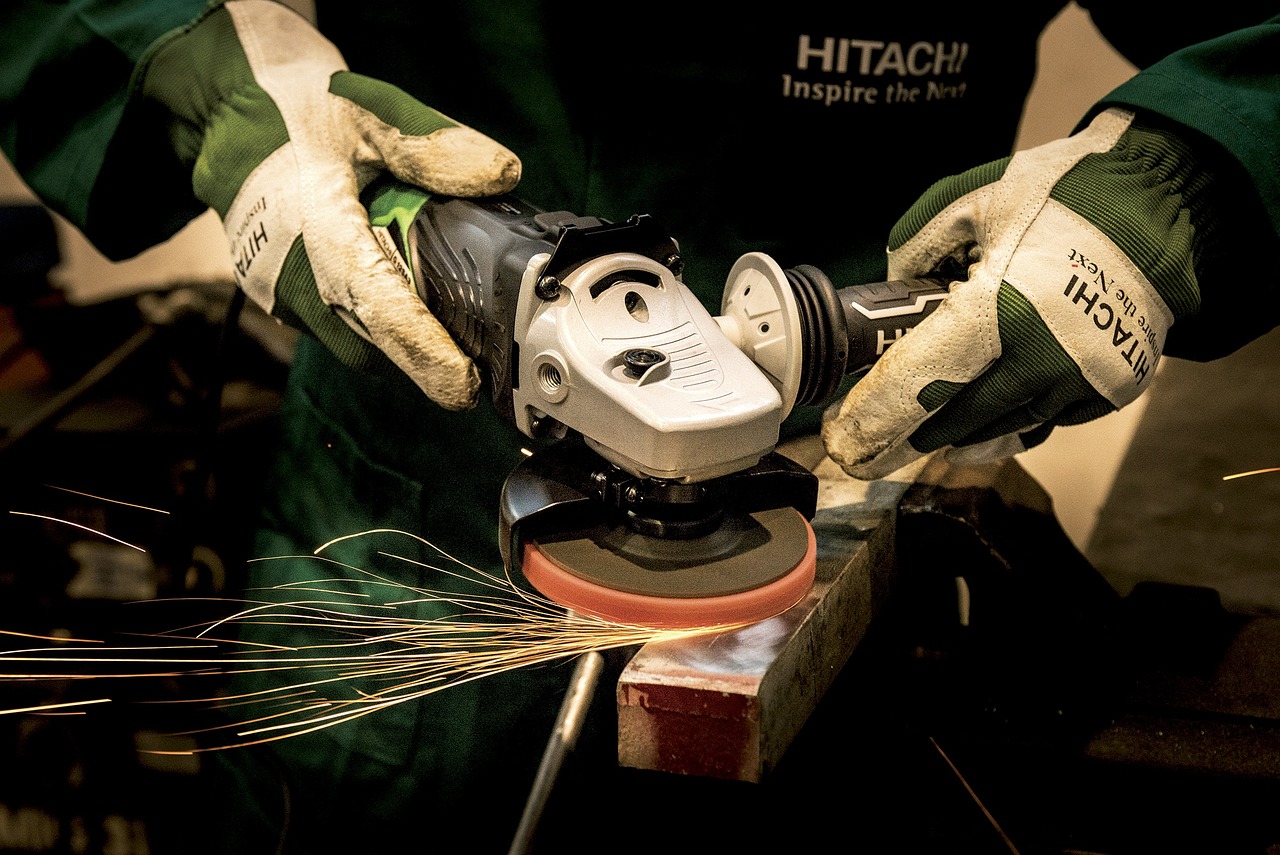
Understanding Clamping Basics
When it comes to woodworking, clamping is more than just a means to hold pieces together; it's an art form that requires a solid understanding of its fundamentals. Imagine trying to assemble a jigsaw puzzle without the right pieces fitting snugly together. That’s what poor clamping can do to your woodworking project. It’s all about pressure distribution and alignment. Getting these two elements right is crucial for achieving the best results. If you don’t distribute the pressure evenly across your workpieces, you risk warping or even damaging your wood. Think of clamping as the backbone of your project—without it, everything else is at risk of collapsing.
So, what exactly do we mean by pressure distribution? Well, when you apply pressure through a clamp, it needs to be spread evenly across the surface of the wood. If one area receives too much pressure while another area gets too little, you could end up with a crooked joint or a split board. This is where the design of the clamp plays a vital role. A well-designed clamp will ensure that pressure is applied evenly, allowing your joints to fit together perfectly.
Alignment is equally important. Proper alignment ensures that the pieces you are working with fit together seamlessly. Imagine trying to glue two pieces of wood that are misaligned; not only will it look unprofessional, but it can also compromise the strength of the joint. Using clamps helps to keep everything in line while the adhesive sets, ensuring that your project comes together beautifully.
Another essential aspect of clamping is the material of the clamp itself. Different materials can offer different benefits. For instance, metal clamps tend to provide a more robust clamping force, while wooden clamps may be gentler on delicate surfaces. Understanding the materials involved will help you choose the right clamps for your specific projects.
In summary, mastering the basics of clamping can significantly enhance the quality of your woodworking projects. By focusing on pressure distribution and alignment, and considering the materials used, you’ll set yourself up for success. Whether you’re a seasoned woodworker or just starting out, these foundational principles will guide you in achieving precision and quality in your work.
- What is the purpose of clamping in woodworking? Clamping holds workpieces together, ensuring proper alignment and pressure while adhesives cure or joints are fastened.
- How do I choose the right clamp for my project? Consider the size, type of joint, and material of your project to select the most suitable clamp.
- Can I use any clamp for all types of woodworking? No, different clamps serve unique purposes. It's important to choose the right type for your specific needs.
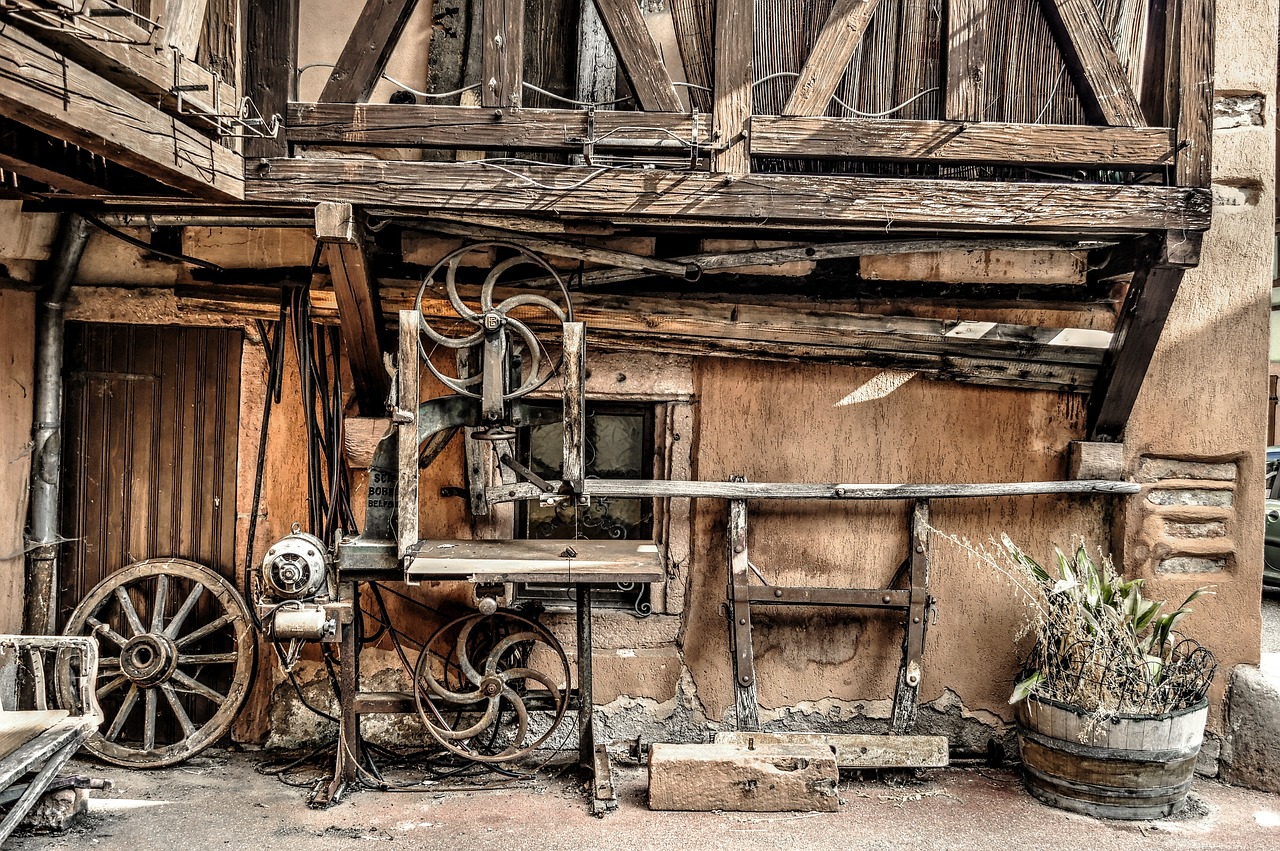
Types of Clamps
When it comes to woodworking, understanding the available is crucial for achieving the best results in your projects. Each type of clamp has its unique features, advantages, and applications that can significantly impact the quality and precision of your work. Whether you're a seasoned woodworker or a beginner, knowing which clamp to use can save you time, effort, and frustration. Let's dive into some of the most common types of clamps you'll encounter in the workshop.
Bar clamps are among the most versatile tools in a woodworker's arsenal. They are designed to provide strong, even pressure across large surfaces, making them ideal for gluing panels, assembling frames, and more. The sliding arm allows for quick adjustments, enabling you to clamp down on various sizes of workpieces without breaking a sweat. Imagine having a tool that adapts to your needs as easily as you adapt to a new recipe in the kitchen!
One of the standout features of bar clamps is their ability to deliver high clamping force. This means you can trust them to hold your pieces securely while the glue dries. Additionally, their quick-adjust mechanism allows for efficient workflow, especially when working on multiple projects at once. Here are a few key advantages:
- Quick adjustments for various sizes
- High clamping force for secure holds
- Versatile for different woodworking tasks
Despite their many benefits, bar clamps do come with some limitations. Their bulkiness can make them less suitable for tight spaces or intricate projects where precision is paramount. Think of them like a large SUV; while they are great for hauling big loads, they might struggle to navigate narrow city streets. Be mindful of where you plan to use them to ensure they fit your project needs.
Pipe clamps offer a fantastic, cost-effective solution for larger projects. They allow for custom lengths, which means you can easily adapt them to your specific needs. The beauty of pipe clamps lies in their simplicity; they are easy to assemble and disassemble, making them a practical choice for many woodworkers. Picture them as the Swiss Army knife of clamps—versatile and ready for action whenever you need them!
Selecting the right clamp for your woodworking project is essential for ensuring success. Factors such as the material, size, and type of joint will dictate which clamp is best suited for the job. Understanding these variables can help you make informed decisions, leading to better results in your craftsmanship.
When choosing clamps, consider the scale of your project, the type of joint you're working with, and the materials involved. For instance, if you're working on a large tabletop, a bar clamp might be your best bet. However, if you're assembling a small box, a corner clamp could provide the precision you need. Being aware of these factors will guide you towards successful clamping, much like knowing the right ingredients can elevate your cooking.
As with any skill, avoiding common mistakes is crucial for maintaining the integrity of your workpieces. Over-tightening your clamps can lead to warping or even breaking the wood, while improper positioning can result in uneven pressure that compromises your joints. It's essential to take your time and ensure that each clamp is positioned correctly, giving your project the best chance at success.
Q: What is the best type of clamp for beginners?
A: For beginners, bar clamps are often recommended due to their versatility and ease of use. They can handle a variety of projects and are simple to adjust.
Q: How do I know if I’m using enough pressure?
A: A good rule of thumb is to apply enough pressure to hold the pieces securely without causing any visible deformation. If you're unsure, start with moderate pressure and increase it gradually.
Q: Can I use different types of clamps together?
A: Absolutely! Many woodworkers use a combination of clamps to achieve the best results, depending on the specific requirements of their projects.
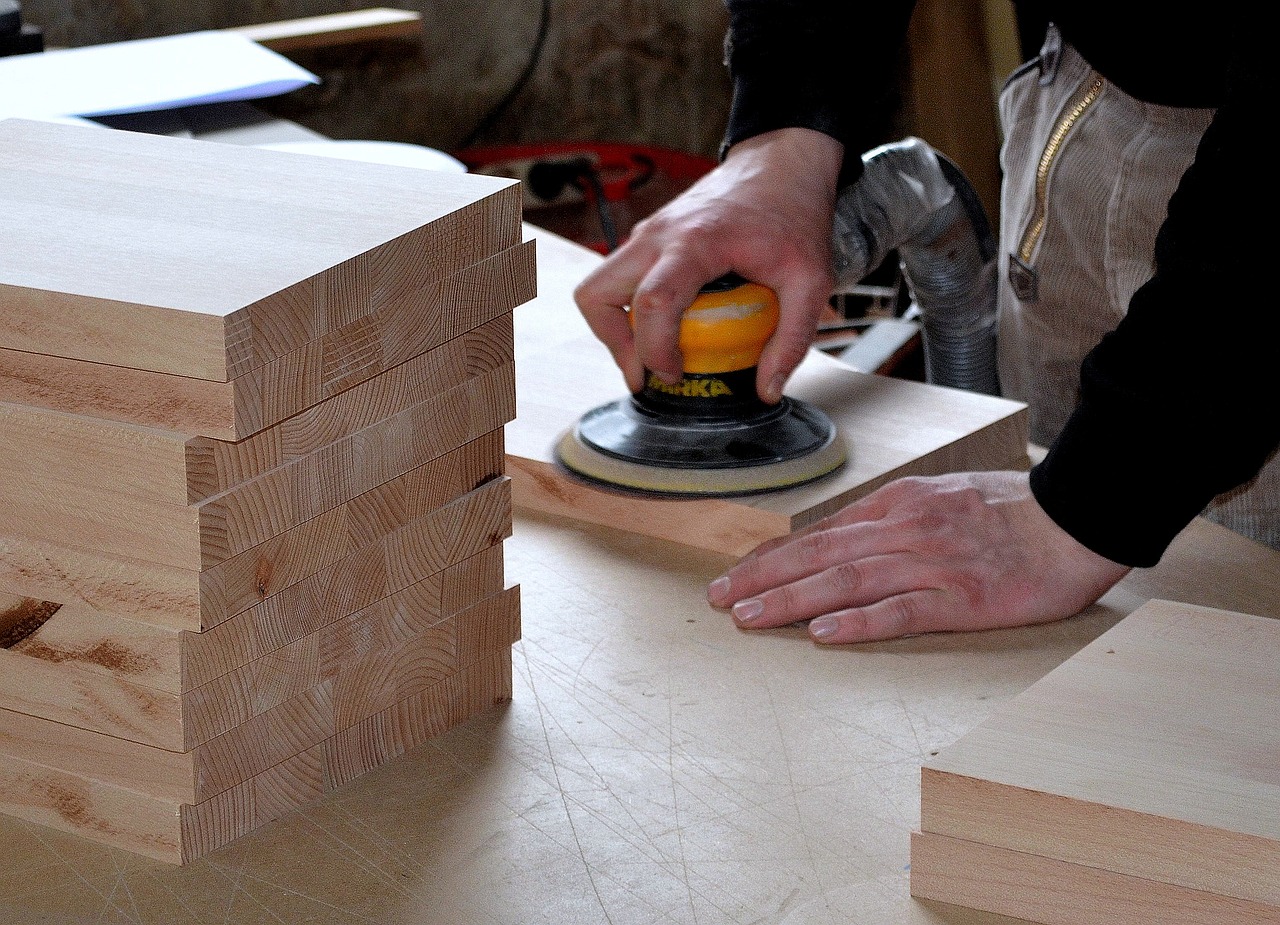
Bar Clamps
This article explores the essential techniques and tools for effective clamping in woodworking, enhancing precision and quality in your projects. Discover tips, types of clamps, and best practices for optimal results.
Learn the fundamental principles of clamping, including pressure distribution and alignment. Understanding these basics is crucial for achieving the best results in your woodworking projects.
Explore the various types of clamps available for woodworking, including bar clamps, pipe clamps, and corner clamps. Each type serves a unique purpose and can significantly impact your woodworking process.
Bar clamps are among the most versatile tools in a woodworker's arsenal, especially when tackling large projects. Their design consists of a long metal bar with adjustable arms that can be tightened to hold pieces of wood securely in place. This makes them ideal for a variety of applications, from assembling larger furniture pieces to gluing up panels. The beauty of bar clamps lies in their ability to distribute pressure evenly across the surface, which is crucial for preventing warping or misalignment.
When using bar clamps, you’ll often find that they can accommodate a range of sizes, thanks to their adjustable nature. This adaptability is a game changer, allowing you to work on projects of varying dimensions without needing to switch tools constantly. However, it’s worth noting that while they are fantastic for larger tasks, they can be a bit bulky. This bulkiness might make it challenging to fit them into tighter spaces or around intricate designs. But when you need strong, even pressure, bar clamps are hard to beat.
In summary, here are some of the key features of bar clamps:
- Quick Adjustments: Easily modify the width to suit different projects.
- High Clamping Force: Provides strong pressure for secure holds.
- Versatile Use: Suitable for both small and large-scale tasks.
Bar clamps offer several advantages that make them a favorite among woodworkers. Their ability to provide quick adjustments means you can set them up in no time, saving you precious moments during your workflow. Additionally, the high clamping force they deliver is essential for ensuring that joints are tight and secure, which is particularly important when working with glue. This combination of speed and strength makes bar clamps a go-to tool for many woodworking enthusiasts.
Despite their many benefits, it’s important to acknowledge the limitations of bar clamps. Their bulkiness can be a drawback, especially when working on intricate pieces or in confined spaces. In such situations, you might find that a smaller clamp or a different type of clamping solution could serve you better. Understanding these limitations will help you choose the right tool for the job, ensuring that your projects turn out perfectly.
Selecting the appropriate clamp for your specific woodworking project is essential. Factors like the material, size, and type of joint will determine the best clamp to use.
When choosing clamps, consider the project scale, the type of joint, and the materials involved. Understanding these factors will help you make informed decisions for successful clamping.
Avoiding common clamping mistakes, such as over-tightening or improper positioning, is crucial for maintaining the integrity of your workpieces and achieving the desired results.
Q: What is the best type of clamp for woodworking?
A: The best type of clamp depends on your project. Bar clamps are great for large assemblies, while pipe clamps offer flexibility in length.
Q: How do I avoid over-tightening my clamps?
A: Always apply gradual pressure and check the alignment of your pieces before fully tightening the clamps.
Q: Can I use bar clamps for smaller projects?
A: Yes, but consider using smaller clamps if the project is intricate to avoid bulkiness.
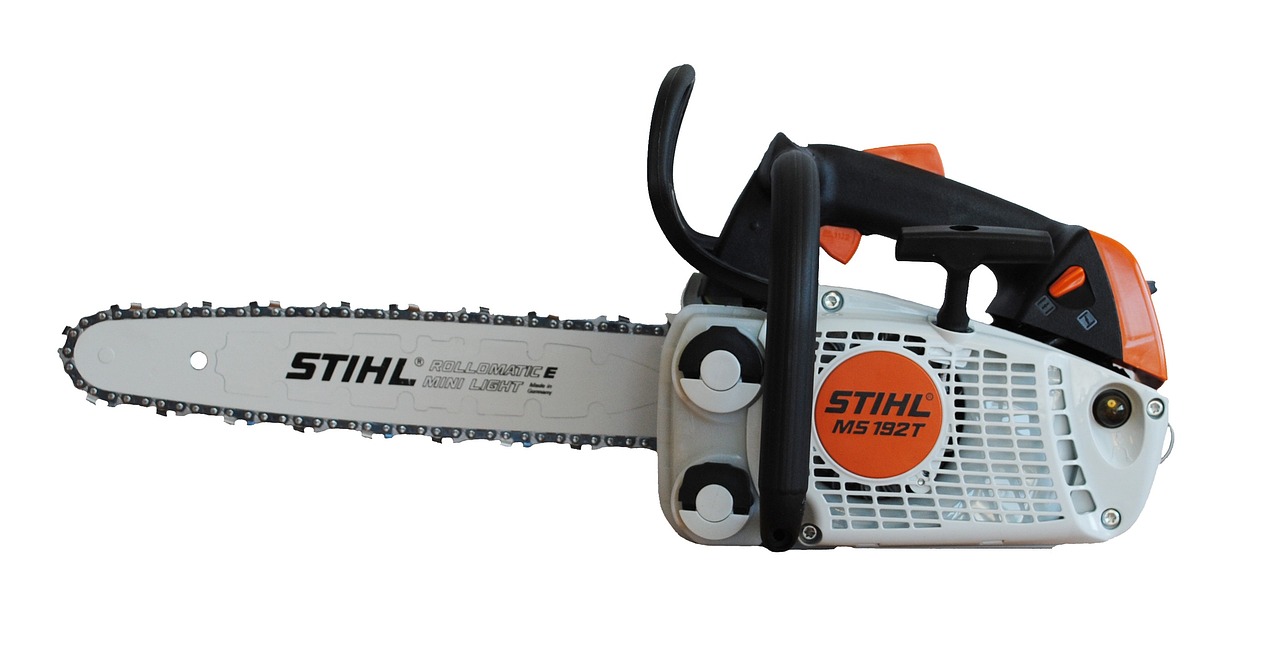
Advantages of Bar Clamps
This article explores the essential techniques and tools for effective clamping in woodworking, enhancing precision and quality in your projects. Discover tips, types of clamps, and best practices for optimal results.
Learn the fundamental principles of clamping, including pressure distribution and alignment. Understanding these basics is crucial for achieving the best results in your woodworking projects.
Explore the various types of clamps available for woodworking, including bar clamps, pipe clamps, and corner clamps. Each type serves a unique purpose and can significantly impact your woodworking process.
Bar clamps are versatile tools ideal for large projects. They provide strong, even pressure and are easy to adjust, making them a favorite among woodworkers for various applications.
Bar clamps stand out in the woodworking world for several compelling reasons. Firstly, their quick adjustment capabilities allow you to set them up in a matter of seconds, which is a game changer when you're in the middle of a project. Imagine trying to align two large pieces of wood; with bar clamps, you can easily slide the clamp along the bar to find that perfect fit without wasting precious time.
Another significant advantage is the high clamping force they provide. This means that once you've secured your workpieces, they stay put, ensuring that your joints are tight and your glue bonds are strong. This is especially important when working with materials that can shift or warp, as a solid grip is essential for maintaining the integrity of your project.
Additionally, bar clamps are incredibly versatile. They can be used for a variety of tasks, from holding panels together during glue-up to applying pressure on miter joints. Their adaptability makes them suitable for both small and large-scale woodworking tasks, allowing you to tackle a wide range of projects without needing to switch tools constantly.
However, it's important to note that while bar clamps are incredibly useful, they can also be somewhat bulky. This can limit their usability in tight spaces, but their overall benefits often outweigh this limitation. For instance, if you're working on a large tabletop, the size of the bar clamp won't matter much, as the strength and adjustability will prove invaluable.
Pipe clamps are a cost-effective solution for larger projects, allowing custom lengths for clamping. They are easy to assemble and disassemble, making them a practical choice for many woodworkers.
Selecting the appropriate clamp for your specific woodworking project is essential. Factors like the material, size, and type of joint will determine the best clamp to use.
When choosing clamps, consider the project scale, the type of joint, and the materials involved. Understanding these factors will help you make informed decisions for successful clamping.
Avoiding common clamping mistakes, such as over-tightening or improper positioning, is crucial for maintaining the integrity of your workpieces and achieving the desired results.
- What is the best type of clamp for beginners?
Bar clamps are often recommended for beginners due to their ease of use and versatility.
- Can I use bar clamps for smaller projects?
Yes, bar clamps can be used for smaller projects, but consider using smaller clamps if space is an issue.
- How do I avoid damaging my wood when clamping?
Using protective pads or blocks can help distribute pressure and prevent damage to your wood surfaces.
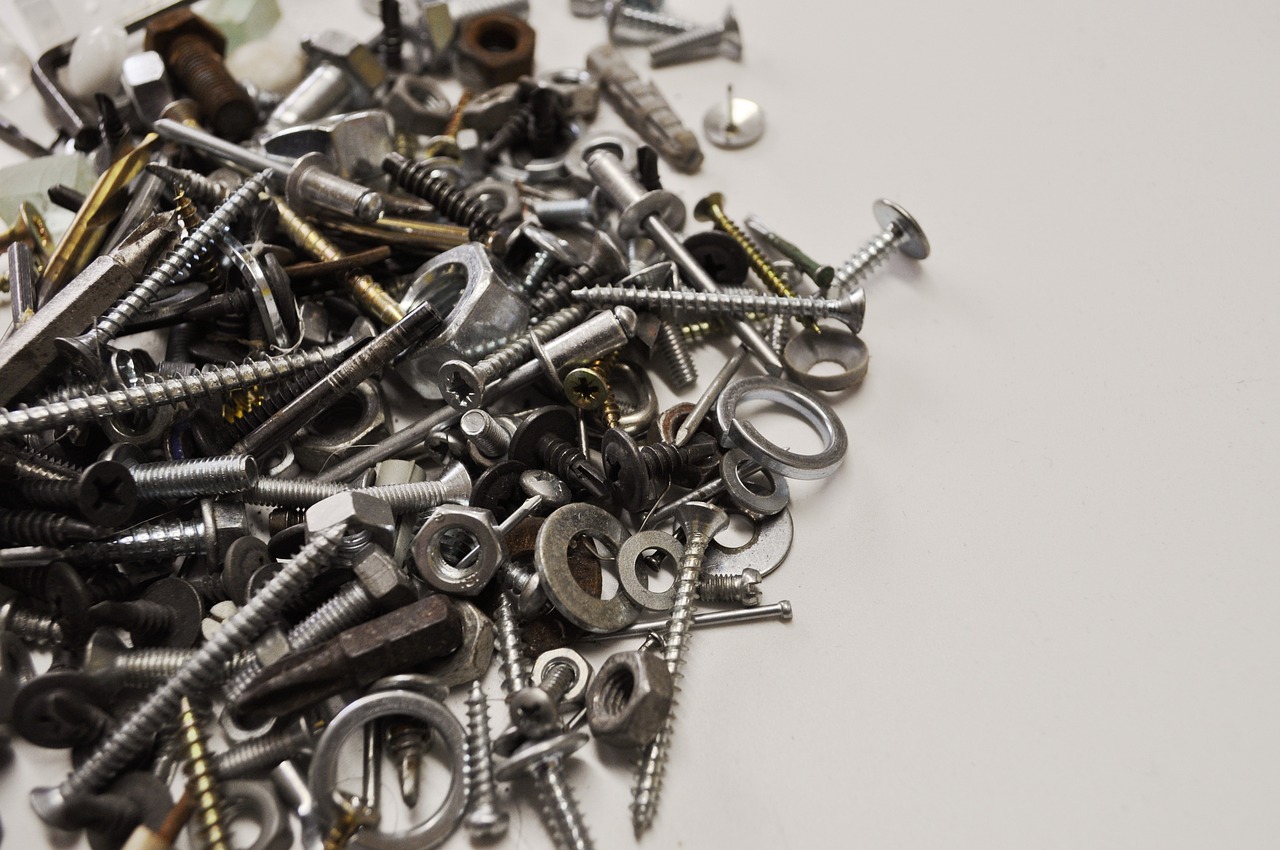
Limitations of Bar Clamps
This article explores the essential techniques and tools for effective clamping in woodworking, enhancing precision and quality in your projects. Discover tips, types of clamps, and best practices for optimal results.
Learn the fundamental principles of clamping, including pressure distribution and alignment. Understanding these basics is crucial for achieving the best results in your woodworking projects.
Explore the various types of clamps available for woodworking, including bar clamps, pipe clamps, and corner clamps. Each type serves a unique purpose and can significantly impact your woodworking process.
Bar clamps are versatile tools ideal for large projects. They provide strong, even pressure and are easy to adjust, making them a favorite among woodworkers for various applications.
Bar clamps offer several advantages, including quick adjustments and high clamping force, making them suitable for both small and large-scale woodworking tasks.
While bar clamps are undeniably useful, they come with their own set of limitations that can affect your woodworking experience. One of the primary drawbacks is their bulkiness. These clamps can be quite large and cumbersome, which might make them difficult to maneuver in tight spaces. Imagine trying to navigate a large ship through a narrow canal; it’s not just about having the right tools, but also about having the right size for the job at hand.
Another limitation is that bar clamps can sometimes apply uneven pressure if not positioned correctly. This can lead to warped joints or misaligned pieces, ultimately compromising the quality of your work. It's akin to trying to balance a stack of books on a wobbly table; if the foundation isn't stable, everything is at risk of toppling over.
Moreover, bar clamps can be somewhat heavy, which may lead to fatigue during prolonged use. If you're working on a large project that requires multiple clamps, the cumulative weight can become quite burdensome. For instance, if you were to carry a heavy backpack filled with rocks, you’d soon feel the strain, making you less effective in your task.
Lastly, bar clamps often have a limited reach. While they can handle wide boards, they may not be suitable for smaller or intricate projects where precision is key. This limitation can lead to frustration, as you may find yourself needing additional tools to achieve the desired results.
Pipe clamps are a cost-effective solution for larger projects, allowing custom lengths for clamping. They are easy to assemble and disassemble, making them a practical choice for many woodworkers.
Selecting the appropriate clamp for your specific woodworking project is essential. Factors like the material, size, and type of joint will determine the best clamp to use.
When choosing clamps, consider the project scale, the type of joint, and the materials involved. Understanding these factors will help you make informed decisions for successful clamping.
Avoiding common clamping mistakes, such as over-tightening or improper positioning, is crucial for maintaining the integrity of your workpieces and achieving the desired results.
- What is the best type of clamp for beginners? For beginners, bar clamps are often recommended due to their versatility and ease of use.
- Can I use a bar clamp for small projects? While bar clamps are excellent for larger projects, they may not be the best choice for small projects due to their size.
- How do I know if I’m applying too much pressure? A good rule of thumb is to apply just enough pressure to hold the pieces together without distorting them. If you notice any bending or warping, it’s time to ease off.

Pipe Clamps
When it comes to woodworking, emerge as a favorite among many woodworkers, and for good reason! These clamps are not only cost-effective but also incredibly versatile, making them a go-to choice for larger projects. Picture this: you’re working on a substantial table or a large cabinet, and you need something that can hold everything together firmly while allowing you to adjust as you go. That’s where pipe clamps shine!
One of the standout features of pipe clamps is their ability to accommodate custom lengths. You can easily adjust the length of the clamp by using different sizes of pipes, which means you can tackle projects of various dimensions without having to invest in multiple clamps. This flexibility is akin to having a Swiss Army knife in your toolbox – it’s always ready for whatever challenge you throw at it!
Another advantage of pipe clamps is their ease of assembly and disassembly. You won’t need to wrestle with complicated mechanisms or spend ages figuring out how to set them up. Simply attach the clamp to the pipe, tighten it, and you’re good to go. This user-friendly design allows you to focus more on your project and less on the tools.
However, it’s essential to keep in mind that while pipe clamps are fantastic for larger projects, they do have some limitations. For instance, they can be a bit cumbersome in tight spaces. If you’re working on a project that requires precision in a confined area, you might find that pipe clamps are not the best fit. In such cases, you might want to consider using smaller clamps that can maneuver into those tricky spots.
In summary, pipe clamps are a valuable addition to any woodworker's toolkit. They offer a blend of adaptability, strength, and simplicity that can significantly enhance your woodworking experience. Just remember to assess your project needs carefully; knowing when to use pipe clamps versus other types of clamps can make all the difference between a successful project and a frustrating one.
- What are pipe clamps best used for? Pipe clamps are ideal for larger projects that require even pressure across a wide area, such as tabletops or cabinets.
- Can I use any type of pipe for pipe clamps? Yes, you can use various types of pipes, but ensure they are sturdy enough to withstand the clamping pressure.
- Are pipe clamps easy to store? While pipe clamps can be a bit bulky, they can be disassembled for easier storage when not in use.
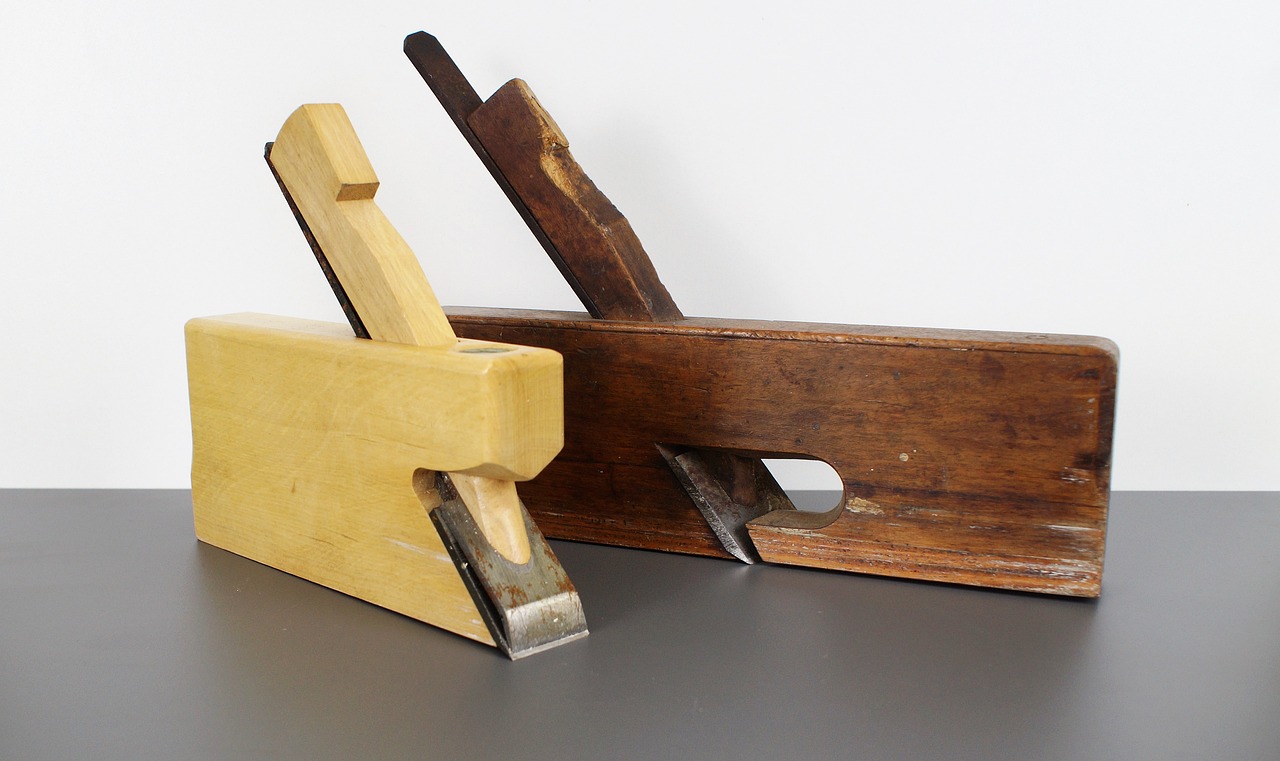
Choosing the Right Clamp for Your Project
When it comes to woodworking, choosing the right clamp can feel like trying to find a needle in a haystack. With so many options available, it’s crucial to narrow down your choices based on several key factors. The first thing to consider is the scale of your project. Are you working on a small, delicate piece or a massive structure? The size and weight of your materials will greatly influence your clamp selection. For instance, larger projects often benefit from the strength of bar or pipe clamps, while smaller projects might be better suited for spring or C-clamps.
Next, think about the type of joint you are working with. Different joints require different clamping techniques. For example, if you’re creating a butt joint, you’ll need a clamp that can apply even pressure across the joint without shifting the pieces out of alignment. On the other hand, miter joints might require a different approach, as they need precise angles to fit together snugly. Understanding the specific requirements of your joints can save you a lot of frustration down the line.
Another consideration is the material of your workpieces. Are you working with hardwood, softwood, or perhaps a composite material? Each type of wood has its own characteristics, and the clamping pressure required can vary accordingly. Over-tightening a clamp on softwood can lead to dents or even breakage, while hardwood may require more pressure to achieve a solid bond. Always keep in mind the material's properties as you make your selection.
It’s also wise to think about the clamping method. Some clamps are designed for quick adjustments, which can be a huge time-saver during assembly. Others might provide a more secure hold but require more time to set up. For example, if you’re in a hurry, a quick-release clamp could be your best friend, allowing you to move swiftly between tasks without compromising on quality.
To help you visualize your options, here’s a quick comparison table summarizing the key features of popular clamp types:
| Clamp Type | Best For | Advantages | Limitations |
|---|---|---|---|
| Bar Clamps | Large projects | Strong pressure, easy adjustment | Bulky, may not fit tight spaces |
| Pipe Clamps | Custom lengths | Cost-effective, easy to assemble | Requires pipe purchase, less portable |
| Spring Clamps | Quick holds | Fast and easy to use | Less clamping force, limited size range |
| C-Clamps | General use | Versatile and sturdy | Can be slow to adjust |
In conclusion, selecting the right clamp for your woodworking project is not just about grabbing the first one you see. It requires careful consideration of various factors such as project scale, joint type, material, and clamping method. By taking the time to evaluate these elements, you’ll not only enhance your woodworking experience but also ensure that your projects turn out with the precision and quality you desire. Remember, the right clamp can make all the difference!
Q: How do I know if I’m using the right amount of pressure when clamping?
A: The right amount of pressure varies by material and joint type. Start with moderate pressure and gradually increase it while checking for any signs of distortion or damage.
Q: Can I use multiple clamps on one joint?
A: Absolutely! Using multiple clamps can help distribute pressure evenly and ensure a tight bond, especially for larger joints.
Q: What’s the best way to protect my wood from clamp marks?
A: Using protective pads or blocks between the clamp and wood can help prevent indentations and marks.

Factors to Consider
When embarking on a woodworking project, selecting the right clamp is not just a matter of grabbing the nearest tool from your workshop; it's a decision that can significantly influence the quality and precision of your work. Think of clamps as the unsung heroes of woodworking—they're the silent supporters that hold everything together while you bring your vision to life. So, what should you consider when choosing the perfect clamp for your project? Let's dive into some key factors that can help you make an informed decision.
First and foremost, project scale plays a crucial role. Are you working on a small, intricate piece or a large, heavy structure? For smaller projects, you might find that a simple bar clamp suffices, while larger projects may require the strength and reach of pipe clamps. The scale determines not only the type of clamp you'll need but also the number of clamps you might require. Imagine trying to hold together a massive wooden table with just one clamp—it's like trying to balance a stack of books with only a paperclip!
Next, consider the type of joint you’ll be working with. Different joints require different levels of pressure and support. For example, if you're creating a butt joint, a simple clamp may do the trick. However, for more complex joints like dovetails, you might need specialized clamps that can apply pressure from multiple angles. Understanding the joint type will guide you in selecting clamps that can provide the necessary support without compromising the integrity of your work.
Additionally, the material of the wood is another factor that should not be overlooked. Hardwoods, softwoods, and engineered woods all react differently to pressure. You wouldn’t want to crush softwood with excessive clamping force, just like you wouldn’t want to under-clamp a hardwood joint. Each material has its own unique characteristics, and your choice of clamp should reflect that. For instance, using padded clamps can help distribute pressure evenly and protect softer woods from dents and damage.
Lastly, the environment in which you are working can also impact your choice of clamps. If you're in a cramped workshop, you may need to consider clamps that have a more compact design or those that can fit into tight spaces. On the other hand, if you have ample room, you might opt for larger clamps that can exert more force. Think of it like choosing the right shoes for a hike; the terrain matters!
In summary, when selecting clamps for your woodworking projects, keep these factors in mind: project scale, joint type, wood material, and working environment. By paying attention to these details, you’ll not only enhance your clamping efficiency but also elevate the overall quality of your woodworking endeavors. And remember, the right clamp can make all the difference between a project that wows and one that falls flat!
- What are the most common types of clamps used in woodworking?
Bar clamps, pipe clamps, and corner clamps are among the most frequently used types in woodworking projects.
- How do I know if I am using too much pressure when clamping?
Signs of over-tightening can include visible dents in the wood or difficulty in removing the clamps after the glue has dried.
- Can I use any clamp for any project?
Not all clamps are suitable for every project; it's important to choose clamps based on the project's scale, joint type, and materials.
- What is the best way to protect my wood from clamp marks?
Using pads or blocks between the clamp and the wood can help distribute pressure evenly and prevent damage.

Common Mistakes to Avoid
When it comes to woodworking, clamping might seem like a straightforward task, but there are several common mistakes that can lead to disastrous results. One of the biggest pitfalls is over-tightening your clamps. While it might be tempting to crank down as hard as you can to ensure a tight fit, doing so can actually warp your wood or damage your joints. Think of it like trying to squeeze a sponge too tightly; instead of getting the desired result, you end up with a mess. Instead, aim for a firm grip that holds everything in place without causing undue stress on the materials.
Another frequent error is improper positioning of the clamps. Many woodworkers underestimate the importance of aligning their clamps correctly. If your clamps are not positioned evenly across the joint, you risk creating gaps or misalignments that could ruin your project. To avoid this, take a moment to assess the layout of your clamps before tightening them. A good rule of thumb is to place clamps at regular intervals along the joint, ensuring that pressure is distributed evenly.
Additionally, neglecting to use protective pads on your clamps can lead to unsightly marks or dents on your wood. Clamps can leave impressions, especially on softer woods, so consider using scrap pieces of wood or commercial clamp pads to protect your workpieces. This small step can save you a lot of sanding and refinishing later on.
Lastly, it's essential to choose the right clamp for the job. Using a clamp that is too small or not suited for your specific project can lead to frustration and poor results. For instance, trying to use a small C-clamp for a large panel glue-up is like trying to use a toy car to haul a trailer—it's just not going to work. Always assess the scale and requirements of your project before selecting a clamp.
By being aware of these common mistakes, you can significantly enhance the quality of your woodworking projects. Remember, effective clamping is all about balance—finding the sweet spot between pressure and protection. So next time you’re ready to clamp, take a moment to reflect on these tips, and you’ll be on your way to achieving stunning results!
- What is the best type of clamp for beginners? - Bar clamps are often recommended for beginners due to their versatility and ease of use.
- How tight should I tighten my clamps? - Aim for a firm grip without over-tightening; you want to hold the pieces together without damaging them.
- Can I use any clamp for any project? - Not all clamps are suitable for every project; consider the size, material, and type of joint before choosing.
- What can I do to prevent clamp marks on my wood? - Use protective pads or scrap wood between the clamp and the workpiece to avoid impressions.
Frequently Asked Questions
- What is the importance of clamping in woodworking?
Clamping is crucial in woodworking because it ensures that your joints are secure and aligned properly. Without proper clamping, your pieces can shift, leading to misalignments and weak joints. Think of it like holding a puzzle piece in place while the glue dries; without that pressure, the pieces won’t fit together correctly.
- How do I choose the right clamp for my project?
Choosing the right clamp depends on several factors, including the size of your project, the type of joint you’re working with, and the materials involved. For instance, bar clamps are great for larger projects, while pipe clamps offer flexibility in length. Always assess your specific needs before making a selection to ensure the best results.
- Can I over-tighten clamps?
Yes, over-tightening clamps can lead to several issues, such as damaging your workpieces or distorting the joint. It's essential to apply just enough pressure to hold the pieces securely without causing stress. Think of it like hugging someone too tightly; it can be uncomfortable and even cause harm!
- What are the common mistakes to avoid when clamping?
Common mistakes include over-tightening, improper positioning of clamps, and using the wrong type of clamp for the job. Each of these can compromise the integrity of your work. Always take a moment to double-check your setup before applying pressure to ensure everything is aligned correctly.
- Are there any specific tips for using bar clamps effectively?
Absolutely! When using bar clamps, make sure to position the clamp pads evenly on your workpiece to distribute pressure uniformly. Additionally, adjust the clamp slowly to avoid sudden shifts in your materials. It's all about maintaining control and precision!
- How do pipe clamps compare to other types of clamps?
Pipe clamps are often more cost-effective and versatile than other clamp types, allowing for adjustable lengths. They are ideal for larger projects and can be easily assembled or disassembled. However, they may not provide the same level of pressure as bar clamps, so consider your project's specific needs.
- What should I do if my clamps leave marks on my wood?
If clamps are leaving marks on your wood, consider using protective pads or blocks between the clamp and your workpiece. This will help distribute the pressure more evenly and prevent damage. Remember, the goal is to keep your project looking pristine!



















